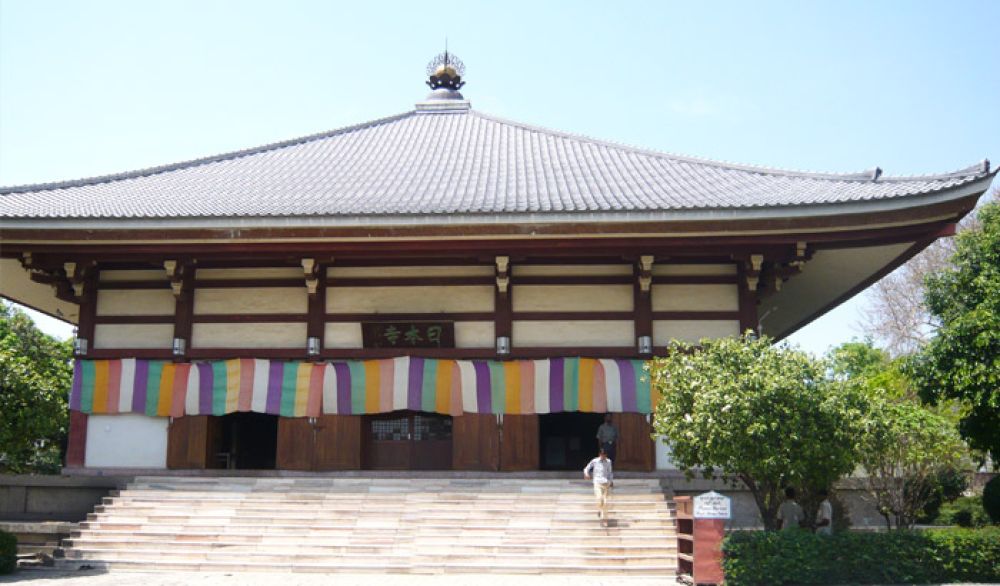

Bodh Gaya, located in the northeastern Indian state of Bihar, is one of the most important and sacred sites for Buddhists worldwide, as it is the place where Prince Siddhartha attained enlightenment and became the Buddha. The city has been a destination for pilgrimage for centuries. The Indosan Nippon Japanese Temple adds a unique cultural blend to this ancient spiritual center, showcasing the connections between India and Japan and their shared Buddhist heritage.
The Indosan Nippon Japanese Temple was built in the 1970s as a result of collaborative efforts between India and Japan to strengthen their cultural bond through the shared foundation of Buddhism. The temple is a symbol of peace and spirituality. Its construction further enriched Bodh Gaya's array of international temples and monasteries from Buddhist communities around the world.
The temple is notable for its Japanese architectural style, quite different from the other temples in the region. The serene environment is complemented by traditional Japanese paintings that depict the life of the Buddha. These mural paintings, completed by Japanese artists, draw many admirers for both their spiritual and artistic value.
Visitors to the Indosan Nippon Japanese Temple often find a sense of peace and calm as they explore its grounds. The temple not only serves as a sanctuary for meditation and prayer but is also an important symbol of the Indo-Japanese relationship, promoting cultural exchanges and understanding between the two nations.
In recent years, the tourism trends at the Indosan Nippon Japanese Temple and Bodh Gaya, in general, have seen a shift towards more sustainable and responsible travel practices. Tourists are increasingly interested in authentic experiences that allow for cultural exchange and personal growth. Given the temple's deep cultural significance and serene atmosphere, it caters well to these evolving preferences.
Additionally, as wellness tourism grows in popularity, locations like Bodh Gaya are becoming more sought after for their focus on spiritual well-being. This trend aligns perfectly with the temple's serene environment and the overall quest for peace that it represents.
For tourists planning to visit the Indosan Nippon Japanese Temple, it's important to note that Bodh Gaya is accessible via the Gaya International Airport, with the temple located just a short distance from the Mahabodhi Temple, the precise location of the Buddha's enlightenment. The site is managed with respect to its religious importance, so visitors are advised to dress modestly and maintain decorum. Photography is often allowed, but it's best to check for any restrictions, especially when it comes to interior spaces.
Visiting the temple offers insight into the global nature of Buddhism along with the opportunity for meditation and reflection. Travelers often leave with a more profound sense of the interconnectedness of different Buddhist traditions and an appreciation for the peaceful teachings of Buddhism.
With the Indian government's effort to promote the Buddhist Circuit, which includes other significant sites like Sarnath and Kushinagar, the Indosan Nippon Japanese Temple is poised to continue being an essential stop for both pilgrims and tourists interested in Buddhist culture and history.